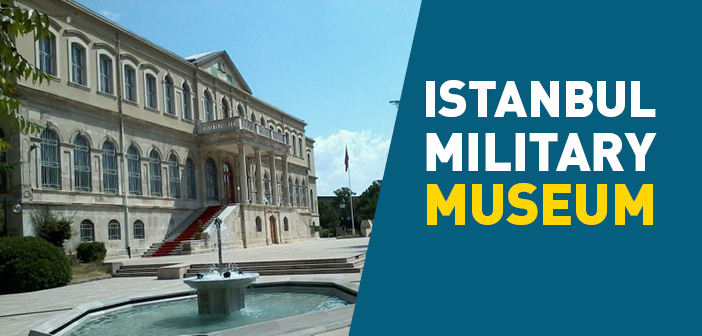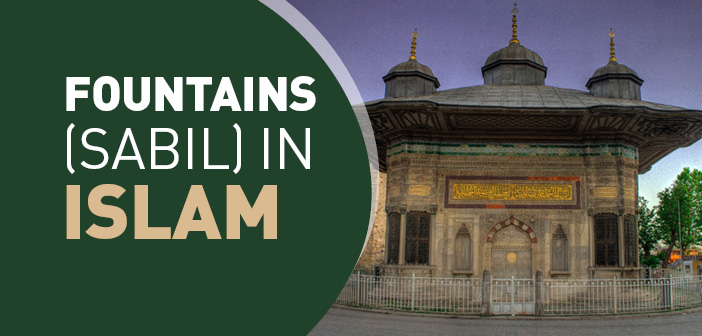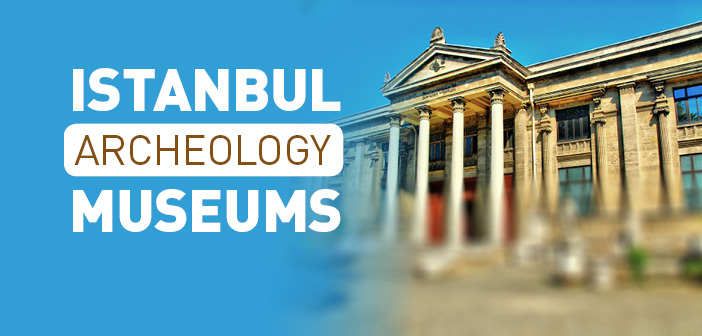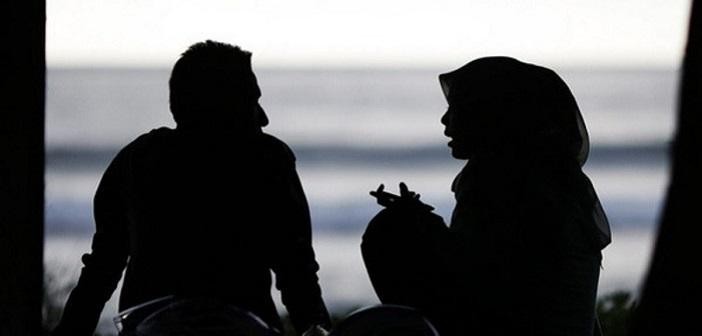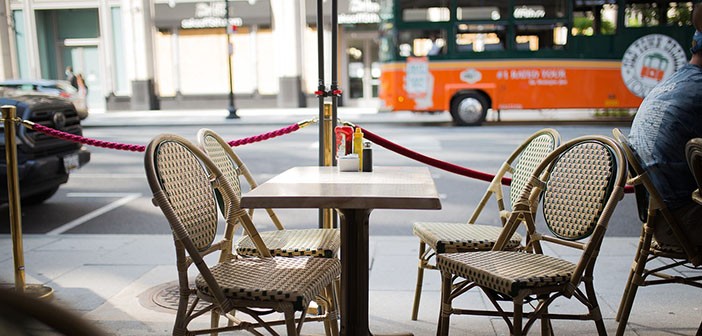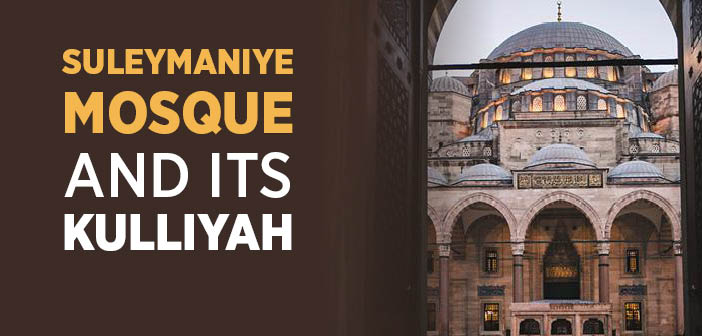
Süleymaniye Mosque and Its Kulliyah
Where is the sulaymaniye mosque in istanbul? Who is the architect of the suleymaniye mosque?
There is no one who has not seen the Süleymaniye during early hours in the morning, when it shines under the sunlight. Go there once again at such early times of the day and contemplate in front of it. You will see how that huge heavy building is lightened by the turrets and the half-domes that support each other and lighten the other’s burden; and how it settles on the ground with such an elegant touch. It knows how to be powerful without being harsh and knows how to be a building without looking like a stone. You cannot see any of its ornamentation from a distance… Is it possible that Hasan of Ulubat who went up to the bastions of Constantinople has ornament? (Nihad Sami Banarlı, Devlet ve Devlet Terbiyesi, p.298-299)
It has been constructed by Mimar Sinan upon the command of Sultan Suleiman the Magnificent between the years of 1500 and 1557.
Süleymaniye is symmetrical and centered kulliyah just like Kulliyah of Fatih. There are madrasas, a guesthouse, a hospital, a mental hospital, some tombs, a bathhouse, markets and a primary school around the mosque that is situated in the center.
Kulliyah of Süleymaniye is one of the masterpieces of a civilization. The mosque has been constructed during the golden age of the Ottoman State. Sultan Suleyman is its benefactor, while Mimar Sinan is the architect of this masterpiece. His work is an architectural brilliance displaying the whole magnificence of the civilization.
Süleymaniye Mosque came into existence as a result of a worksite organization that could not be easily seen throughout the history. Construction materials used for the mosque have been brought from across the Ottoman geography. One of the four pillars, found in the mosque was brought from Alexandria, the other one was brought from Baalbek by ships. The third one was brought from Saray-ı Amire (Imperial Palace), the fourth one was brought from Column of Marcian (Kiztashi). These four pillars, which symbolize the Four Caliphs, are 9.02 m in height and 1.14 m in diameter. Their approximate weight is between 40 - 50 tons.
A Noble Dream
A very nice story related to the construction of the mosque has been narrated:
Reportedly, Sultan Suleiman the Magnificent saw Prophet Muhammad (pbuh) in his dream the night he decided to start the construction of the mosque. The Messenger of Allah (pbuh) gave him some instructions about where and how the mosque was going to be constructed.
In the morning, Sultan excitedly woke up. And the first thing he did was to call the chief architect Sinan to the contemporary location of the mosque. He asked him to build a mosque there. Chief architect Sinan immediately started to talk about the details of the mosque project as if he had been expecting such an order:
- O my sultan! We shall construct the mosque on this place, in such and such way. Its sanctuary will be here, its pulpit will be there and the lectern will be over there.
Sultan realized that description of Sinan was the same as the Prophet Muhammad (pbuh) described to him. Looking at Sinan with a meaningful smile Sultan said that:
- O chief architect! You seem to be informed.
Chief architect Sinan bashfully bowed his head down and gave the following respond indicating that he had seen the same dream:
- My dear sultan! I was just behind you (in the dream). (Osman Nuri Topbas, Abide Şahsiyetleri ve Müesseseleriyle Osmanlı, pp. 381-382)
White marbles used in the construction have been brought from Marmara Island and the green marbles were brought from Arabia. Over three thousand workers were employed in the construction. However, the number changed depending upon the seasons.
They even created specific working conditions for the animals used in the worksite of the mosque. The workers employed in the construction were paid on time; nobody was treated unjustly, and even the animals carrying loads were seeing just treatment. Working hours and resting hours of the animals were written in the working contract. Their food and water were not neglected, and the animals were never forced to carry any burden over their capacity.
Unlike other mosques, the minarets of the Süleymaniye are not attached to the mosque. They are placed on the corners of the courtyard. The ratio between the minarets and the dome is the result of a perfect brilliance. Two of the minarets has three balconies and they are 76 m, and each one of the other two minarets has two balconies and they are 56 m in height. The dome which is 26.5 m in diameter and whose height from ground is approximately 50 m and the minarets present a wonderful ratio and symmetry.
Dimensions of the mosque are 59 m by 58 m. Having almost a square plan the mosque has 3500 m2 interior space.
Four minarets of the mosque indicate that Sultan Suleiman is the fourth Ottoman ruler after the conquest of Istanbul. Ten balconies of the minarets indicate that he is the tenth Ottoman ruler.
The bigger dome of the mosque is supported by two semi-domes. Internal acoustic of the mosque was excellently planned through the cubes that were placed on the inner walls of the bigger dome. Spider webs are prevented by placing ostrich eggs between the candles of the mosque.
When we think about that oil lamps and candles were used for interior lightening in those times, we can understand the enormity of people’s problem of how easily the internal walls of the mosque got blacken from the fumes in a few months. Mimar Sinan found a solution for this problem. Thanks to the air circulation system he established in the mosque, soot coming from approximately four thousand lit candles and oil lamps were gathered in “the soot room” which was placed on top of the main entrance of the mosque.
The mosque is like a showroom in which our traditional arts are displayed. Its marble pulpit and sanctuary are masterpiece of carving. Colored windows upon the sanctuary named Shahper-i Jibril (Wings of Gabriel) are uniquely gorgeous. Calligraphies of the mosque were written by Ahmed Shams al-Din Karahisari, one of the masters of calligraphy of the time. Reportedly, for he had gotten blind while he was writing calligraphy of the dome, the rest of the work was completed by his pupil Hasan Çelebi.
This huge kulliyah cost 896.380 florins, in other words 537 loads 82.900 silver coins (1 load was equal to 100.000 silver coins). According to a recent calculation, today’s cost of the mosque is approximately 900 million dollars and the total cost of the kulliyah is about 3 billion dollars.
When construction of the mosque was completed, everybody who saw it admired the mosque. Displaying an example of a great humility Sultan Suleiman offered the chief architect to open the mosque to worship which he had constructed. Mimar Sinan responded this kind treatment of the ruler saying:
- My sultan! Penman Shams al-Din Karahisari sacrificed his eyes for the sake of writing calligraphies of the mosque. Give this honor to him!
The mosque was opened to worship with prayers and tears mixed with the sounds of “amin”.
There are two tombs in barred graveyard of the mosque. In one of these tombs, Sultan’s wife Hurrem Sultan is buried. In the other, Sultan Suleiman the Magnificent, his daughter Mihrimah Sultan, Sultan Suleiman II and Sultan Ahmed II are buried.
While his monument was far beyond statements
Its architect has hidden himself from the appearance
Success is here and humility is here
Monument is from the greatness, signature is from the point
Arif Nihat Asya
Humble tomb of Mimar Sinan
There is a small tomb on the corner of Kulliyah of Süleymaniye, which is close to the Office of Mufti of Istanbul. This tomb belongs to Mimar Sinan. Just as a humble signature signed under a great masterpiece, it was appended to a corner of the Kulliyah.
Minaret of Jawahir (Jewelries)
Soon after the construction started, Mimar Sinan stopped the construction of the mosque and started to build the other parts of the kulliyah. For this reason, completion of the mosque was delayed for a while. By that time, most parts of the mosque had been completed and only the construction of the dome was left. Because of his old age, Sultan Suleiman desired to see the mosque to be completed and opened to worship before his death.
In the meantime, some people who were jealous of Mimar Sinan were spreading rumors against him. Because the mosque was being constructed such a huge building, they were arguing whether its dome would collapse or not.
Whereas Mimar Sinan thought that he should wait for a while to give time for the foundations completely settle, because the slightest change in balance of the foundations after the construction of the dome would not be good for the sake of the mosque.
While everyone was speculating about the mosque, the original rumors lost many things from their essence during the elapsed months until it finally reached at Persia.
It was informed to the Persian ruler that the Ottoman Empire had started to construct a great place of worship and stopped its construction for they had no money left in their treasure to continue the construction.
Persian Shah, who was in a constant competition with the Ottoman State, finally caught the opportunity which he had been expecting. Shah Tahmasb, pretending as a friend, sent his offers for help (!) via his ambassador. He prepared a jewelry chest full of precious jewels and stones and sent it to Sultan Suleiman via his ambassador. When Sultan Suleiman the Magnificent listened to the words of Persian Shah from his ambassador, he became very angry for the humiliation and degrading the reputation and honor of the state so much. He gave his final and conclusive order to Mimar Sinan: “Finish the mosque at the soonest possible date.”
What happened to the treasure sent from Persia? Sultan Suleiman did not reject the help. He distributed some of the stones to the people around him in front of the Persian ambassador. Sultan Suleiman said: “These stones sent by Shah are worthless compared to the stones of the mosque.” By his command, the rest of the jewels remained in the chest, like emeralds, rubies and diamonds were pulverized in a muller and mixed with the plaster of a minaret that continued to be constructed.
When sunshine reflects, it can be easily distinguished from the others with its shine. That is why this minaret was called Jawahir (Jewels) Minaret among the public.
One More Gift
Reportedly, in those days, while construction of the mosque was continuing, one of Frankish kings sent a precious granite stone as a gift wishing that it would be used in the most beautiful place of the mosque.
The expert architect was not happy with this surprise gift, sent without any reason by the king of a country who does not have any tolerance to Islam. He wondered what would come out under this behavior and had the stone divided down in the middle. Stonemasons saw that there was a cross, graved in a special way, in the stone. Sinan, becoming very angry about that wiliness gave a wise respond. The stone was used for construction of the mosque. It was put on the threshold before one of three gates. Therefore, the believers who come to pray would walk over it when entering the mosque through the courtyard.
The Skewed Minaret
After the construction of Süleymaniye Mosque was completed, the day when it was going to be opened to worship was announced to the public. When the opening day came, people from all parts of Istanbul flocked to that point of the city in order to attend opening of this unique piece. Everyone was admiringly watching this Turkish masterpiece. However, a child among them was shouting:
-Wow! Look at that minaret, how skewed!
Everyone was looking, but nobody was seeing any skew.
They say it was born from a genius
Genius is not enough to create such a piece
For those who cannot see
Neither imagination nor dream would be enough to understand it
Arif Nihat Asya
Words of the child about the skew of a minaret reached to Sinan. Great Architect came to him and said:
- My little one, show me which minaret is skewed.
The child showed one of the minarets saying that “Here, it is!” Mimar Sinan immediately gathered his workers. They tied long ropes to each other and attached them to the minaret. They started to pull with his command “Pull it up!” Then he said to the child:
- My son, look, I have this minaret straightened. Be careful; inform me when it becomes straight.
Workers were pulling it, as they were really straightening. After a while, the child shouted, “Okay, now it is straight.” Workers stopped pulling and untied the ropes. One of his workers who witnessed this event from the beginning posed the question that had on everyone’s mind to Mimar Sinan:
- Our noble chief architect, you know best that there was no skew on the minaret. Then, why did you attempt to straighten it?
Response of Mimar Sinan was a symbol of grace, sensibility and tolerance:
- Do I not know that there was no skew on the minaret? However, I could not leave this impression of “the skewed minaret” on the mind of a child. Therefore, I used this method to clean the thought of “a skewed minaret” from the mind of the child. Otherwise, he would talk about a skewed minaret everywhere with his childish mind, and the rumor that the minaret was skewed would spread among people. (Suleyman Faruk Goncuoglu, Zeliha Kumbasar, Gelenekten Geleceğe Camiler, p.180-181)
Endowments of the Mosque and Kulliyah
After Süleymaniye Mosque was completed, in order to meet its expenses, the income from 271 foundations consisting 217 villages, 2 districts, 30 hamlets, 5 village products, 7 mills, 2 fish farms, 2 seaports, 1 meadowland, 2 farms, 2 islands and 1 share was donated to the mosque.
Mosque Must Be Like This
After the mosque was opened to worship, it was put into service with a great team consisting 275 people. Duties of these people were as follows:
A person to preach to people on Fridays and other sacred days and nights (waiz)
A person to give sermon during Friday prayer and the festival prayers and to lead the prayer (khatib)
2 Imams and 24 muezzins to carry out their duties in turn
10 People to recite a certain part from Qur’an (ashr-i sharif), and a person to sing hymns and recite eulogium (qasidah) and a person to say supplications out loud
120 People to recite parts from the Qur’an following the noon and afternoon prayers, 4 people to distribute parts of Qur’an to the people who will recite them and gather them back again, 2 people to supervise all these duties, 2 people to protect Noble Qur’an.
41 people who know the entire Qur’an by heart to recite chapter al-An’am (5) every day.
20 People to recite 3500 times statements of Oneness (kalimah al-tawhid) “La ilaha illAllah: There is no god but Allah” after the Dawn Prayer, 10 people to recite 1000 salawats or the statement of “Allahumma salli ala Muhammad: O Allah bestow peace upon Muhammad”
6 People to perform 20 cycles of supererogatory prayers and say supplications every day
3 people to recite chapters of Yasin, al-Mulk (Tebareke) and al-Naba’ (Amma) after the Dawn Prayer
A person to burn incense (nice perfumes) in the mosque
10 people to carry out the cleaning services, 8 people to light and blow out oil lamps and candles punctually
4 People to clean the garden, 2 porters and 1 gardener…
What Kind of a Person Are You?
It is a Turkish proverb: “Donkey dies, its saddle remains…Man dies, his work remains…”
When a person wonders and investigates “what Mimar Sinan left behind” the following list is found:
84 mosques, 52 prayer houses, 57 madrasas, 7 centers of Qur’an education (dar al-qurra), 22 tombs, 17 guesthouses and soup kitchens (imarethane), 3 hospitals (darushshifa), 6 aqueducts, 8 bridges, 20 caravansaries, 35 palaces, 3 cisterns and 41 bath houses…
There is a total of 360 pieces not only in Istanbul but scattered around the whole Ottoman geography…
Nihad Sami Banarlı, who was a patriot and a man of faith, said in one of his speeches:
“Whenever the sons of this land pass by Süleymaniye seeing its beauties and comprehend the national romanticism, then only then Turkey will become conscious of the age of salvation and peace.” (Samiha Ayverdi, İki Aşina, p.190-191)
The Feast Morning in Süleymaniye
In every second, the light of my heart, increasing
In Süleymaniye was dawning a great morning
Under our own dome at this festival hour
From all of its nine centuries, all people, the entire country
From place to place reflecting from the blue landscape,
The dusty curtain of time always rises up
Since the moment that night tended to end
The thing heard is flaps in the sky, steps on the land
There is an arrival! How sacred, how strange this universe is
Air is thoroughly filled with thousands of spirits
This arrival from all horizons is from the ancient campaigns
Of the many places conquered by those campaigns
As light and darkness get mixed in this silence
Human and ghost, mixed, are walking without a cease
Some from the sky, some from the earth swarming through every entrance
One after another entering into this divine edifice
This Temple of God is filled from all directions
Süleymaniye becomes history in these hours
The most fighting, the most arduous of all military-nations
Has dedicated to Allah, such an edifice
To make it the most beautiful temple of the last religion
This is the epitome dreamed by the architecture
To allow it to see the eternity better than everywhere
He chose this sacred hill on the skyline of Istanbul,
Together with veterans and commanders, he carried its plaster
Prevailed over the stones by thousands of architects and workers
To both day and night of this free and immense abode
From here, he opened to the sky a spiritual door
So that the armies of the souls would reach at the eternal mercy
A soldier is the architect of this temple of victory
Great temple! I just understand you this morning
Today, I am proud of being one of your inheritor
Once, I thought it was just a monument of geometry
Now, while under your dome looking at the community
Whom I have seen in my dreams and missed for years
I am like entering to the abode of the ancestors’ grace
A mass of same language, same heart, same faith
Seeing that their being gathered in one place
When everybody calls the Almighty Allah in one voice
Many takbirs with thousands of waves transform into one voice
Growing excitement of a rising chorus
Many thousands of horse manes mixed with many plumes!
I saw a man in uniform, sitting in the first row
Listening to the repeated takbirs in elated bliss
How pure the face of that soldier was
Who was he? Was he the constructer or the architect of this great piece?
…
In this great temple, I joined in the unity of nation
Many praises are to God, I saw again,
The souls standing along with the livings
In this feast morning, my heart is full of bliss
Yahya Kemal Beyatlı
Source: Harun Kırkıl, Read About and Travel Around ISTANBUL, Erkam Publications





